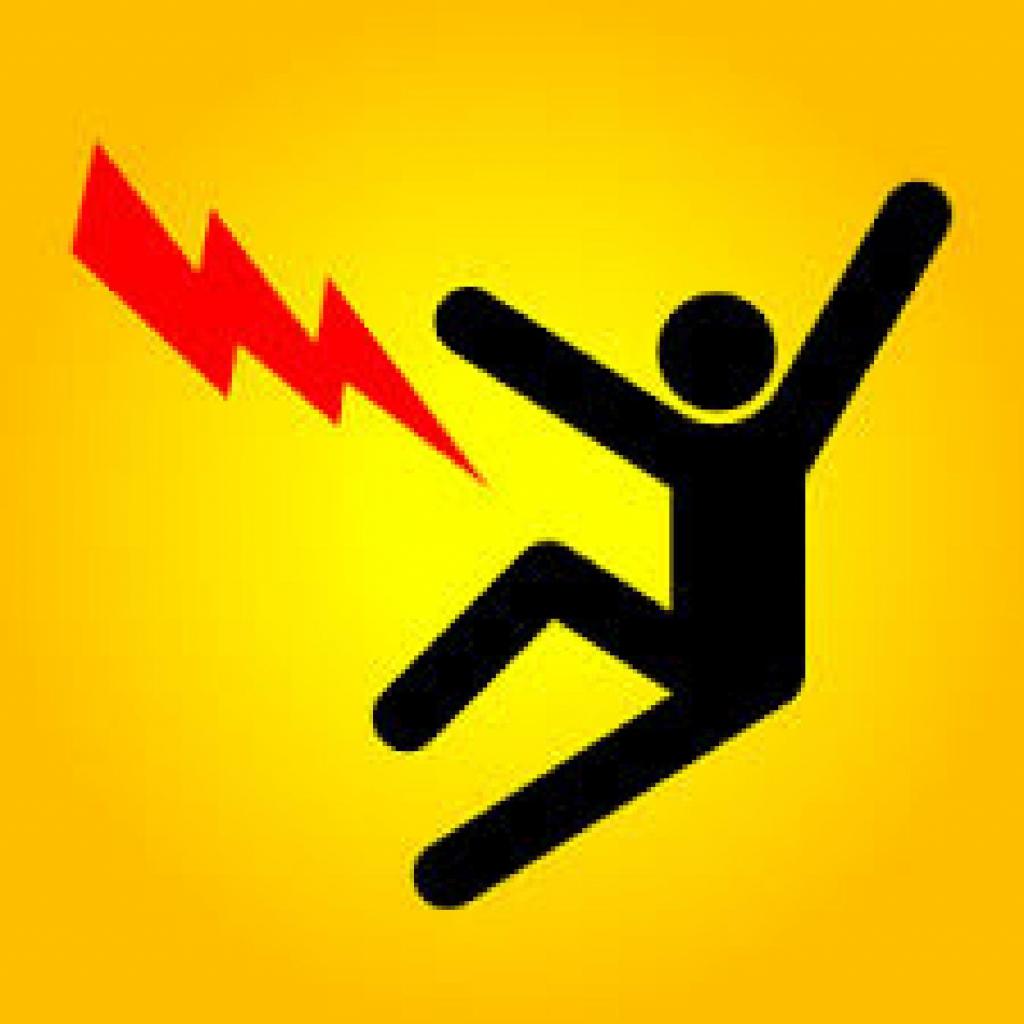Electrical equipment, appliances, electrical networks pose a certain danger to humans both at home and in the workplace. Therefore, it is important to pay attention to the proper provision of electrical safety. In the article we will analyze the main directions of this process, the most important measures, methods and methods.
What is it?
We turn to the definition of GOST R 12.1.009-2009. Electrical safety - a set of technical and organizational measures, means that protect humans, animals from harmful and even dangerous effects of electric current, electromagnetic fields, electric arc, static electricity.
As for the requirements for this kind of security, they are concentrated in the documentation:
- "Rules on labor protection during the operation of electrical installations" (the document was approved by order of the Ministry of Labor of the Russian Federation No. 328n (2013).
- "Rules for the technical operation of electrical installations" (the document was approved by order of the Ministry of Energy of the Russian Federation No. 6 (2003).
Ways
There are several common ways to ensure electrical safety:
- Electrical insulation of conductive elements. In particular, in electrical engineering, reinforced, working, additional, double insulation are distinguished. The latter is such an electrical insulation, which consists immediately of working and additional.
- Zeroing. This is the name of the transformation of the electrical closure on the case of any electrical installation into a short single-phase circuit. As a result, a large short circuit current will occur. In turn, it triggers a current protection. Then the damaged area is also turned off.
- Protective grounding. This method of ensuring electrical safety is needed to protect people from electric shock when touching non-conductive metal components of electrical equipment. The latter may be energized due to damage to the electrical insulation.
- Protective shutdown. This is the name for quick protection, which provides automatic shutdown of the electrical installation when changing (above the already established limits) the parameters of the mains or the electrical installation itself. In particular, when voltage appears on the case of the device, equipment, a decrease in the resistance of the phase wires relative to the ground, etc.
- Fencing of conductive non-insulated elements, their location at a height inaccessible to people and animals. Such current-carrying non-insulated parts (most often they are wires), also mounted on insulators, are located at a height where they are inaccessible for accidental contact. If this is not possible, these elements, wires are closed with special covers, covers and so on. For example, in distribution technology, in places of connecting clamps of various kinds of electric motors, etc.
- Low voltage. This method of ensuring electrical safety is used to reduce, neutralize the danger of electric shock, using only voltage 12 and 42 V. In particular, it is used in particularly adverse conditions: in wells, basements, damp rooms, trenches, etc. To obtain such a low voltage, special step-down transformers are used.
- Locking devices. How is electrical safety achieved here? They do not make mistakes in the work of employees with electrical devices. For example, the entrance to the switchgear with a voltage of more than 1000 V is equipped with a special electromagnetic lock. It allows you to open the door only when the circuit breakers are off, by which voltage is supplied to the distribution plants.
- Electrical separation of networks. This method of ensuring electrical safety is carried out using special transformers. This allows you to achieve an overall high level of insulation of the wiring behind the isolation transformer (regardless of the active resistance of the insulation itself).

Purpose of use
All measures to ensure electrical safety are combined in that they are aimed at achieving common goals:
- Reducing the operating voltage of various electrical installations.
- Equalization of potentials through grounding and grounding.
- Electrical separation of circuits according to the classification of "low-high voltage".
- Increased insulation resistance of live parts. This applies to reinforced, working, double, additional insulation.
- The use of protective shutdown installations, various means of collective protection of people: blocking, signaling, protective, as well as various safety signs.
activity
We will get acquainted with specific technical and organizational measures to ensure electrical safety:
- The maintenance of electrical equipment in operable condition.
- Use of electrical installations in accordance with the requirements of the Rules approved by the Ministry of Labor and the Ministry of Energy.
- High-quality, timely technological maintenance, preventive maintenance, modernization, testing, reconstruction of electrical equipment.
- Selection of qualified electrotechnological, electrotechnical workers.
- Conducting relevant briefings on electrical safety, fire safety.
- Training, knowledge testing of personnel using electrical equipment.
- Ensuring the safety and reliable functioning of electrical installations.
- Labor protection of electrotechnical and electrotechnological personnel , etc.
Safety classes
To ensure electrical safety at the enterprise, it is important to determine the class of electrical devices by the method of protecting people from electric shock. There are five such classes:
- Class 0. It includes devices that have working insulation, but are not equipped with elements for grounding. Accordingly, protection against electric shock is provided only by insulation.
- Class 01. Such products are equipped with working insulation, elements for grounding, as well as a wire that does not have a grounding conductor, for connecting to an electric current source. Accordingly, protection against damage is provided by both working insulation and grounding (this is protective grounding).
- Class I. Such devices have both elements for grounding and working insulation. Moreover, the wires for connecting to power sources have both a grounding wire and a plug with a grounding contact.
- Class II This includes devices that have either reinforced or double insulation, but do not contain grounding elements. Accordingly, only insulation is a means of ensuring electrical safety.
- Class III Devices that do not have either external or internal electric circuits with a voltage of more than 42 V. Such products, powered by external sources, must be connected directly to them (while the voltage of the source should not be higher than 42 V).

Classification of premises
We consider an important component of labor protection - ensuring electrical safety. It is important to correctly determine the class of the room by the danger of defeating people in it by electric current. There are three of them:
- Without increased danger. Such premises include living spaces, control rooms, design bureaus, etc. These are dry rooms where normal temperature and humidity (up to 60%) of air are maintained. Insulating floors are laid here, there is a minimum of grounded objects.
- With increased danger. First of all, this includes rooms with high humidity (within 60-75%), where the air temperature (constantly or periodically) exceeds 35 ° C. Also, conductive dust or conductive floors (metal, concrete, earthen) can be present in them. There is the possibility of touching people at the same time to grounded objects and to the body of electrical devices.
- Particularly dangerous. In this category, damp rooms stand out where the humidity is close to 100%, where there are wet floors and / or walls. Also, these are spaces with a chemically active medium: its gases or vapors can destroy electrical insulation. The category includes rooms that have two or more signs of spaces with increased danger (from this classification). In particular, areas that are located in the open air, showers, battery stations, production halls with grounded floors, etc. are considered particularly dangerous.

Electrical Safety Worker Groups
Security measures are held in various organizations and enterprises. But for their employees to gain access to the operation and maintenance of electrical installations, devices, they need to be assigned a specific electrical safety group.
A similar requirement applies not only to electrical personnel, but also to other employees who have access to equipment. As for the electrical engineering team, it is divided into the following categories:
- operational;
- administrative and technical;
- operational repair;
- repair;
- Electrotechnical personnel of production sites.
For all workers working at or servicing electrical installations, five electrical safety groups are allocated. Get to know them in detail.
Group I
What technical measures to ensure electrical safety are authorized to carry out the employees who are assigned this group? Not much stands out here, since the group is assigned to non-electrical personnel and only to employees who, in the performance of official duties, have a risk of electric shock.
Group II
Such a group is assigned by decision of the qualification commission and only to the electrical personnel who service both the equipment and various electrical installations. These are the following specialties:
- Electric welders (not eligible to connect).
- Machinists lifting devices.
- Thermistes HDTV.
- Persons working on mobile machines, electric mechanisms.
- Employees using hand-held portable electrical appliances, power consumers, cars, etc.
Group III
This qualification group may be assigned only to the electrical staff of the team. It provides the right to a single inspection, as well as connecting / disconnecting electrical installations from a network with a voltage of up to 1000 V.
Group IV
Accordingly, this group is assigned only to the electrical part of the organization’s personnel. Its presence gives the employee the right to work with electrical installations under a voltage of more than 1000 V.
In particular, the assignment of such a group is necessary for engineers to be appointed as a responsible official in the field of electrical engineering. It is necessary for operational personnel to obtain the right to train young personnel in the workplace.
Group V
Such an electrical safety qualification group is assigned to two categories of employees:
- Officials who are responsible for the electrical industry.
- Engineering and technical personnel working with installations with voltages above 1000 V.
In particular, these employees receive the right to supervise the work, to give orders for powerful electrical installations (where the voltage is more than 1000 V).
Ensuring electrical safety is one of the most important tasks in production. We got acquainted with how to achieve it, and with specific activities.